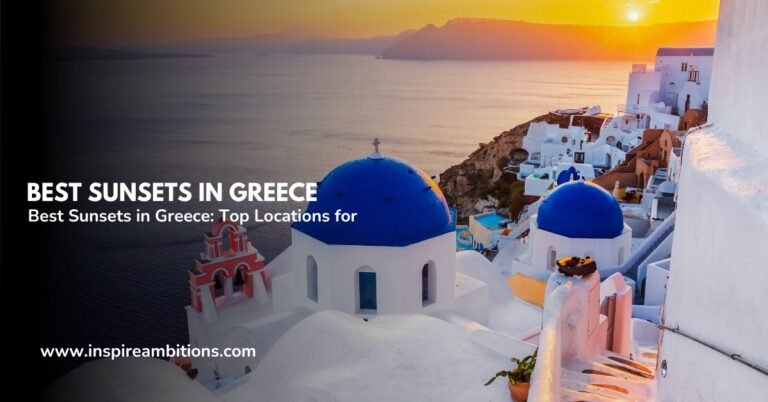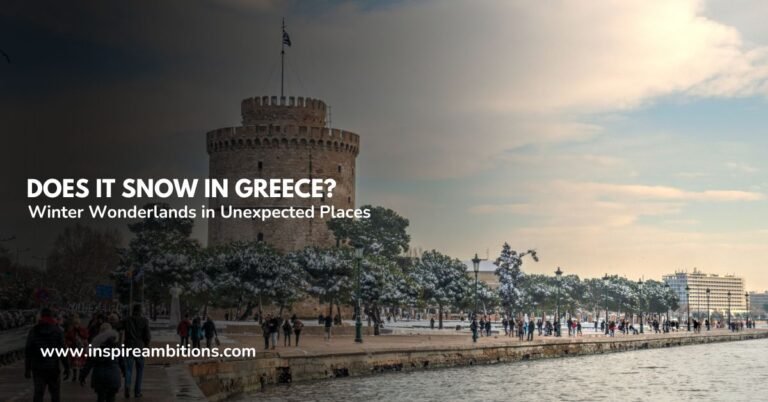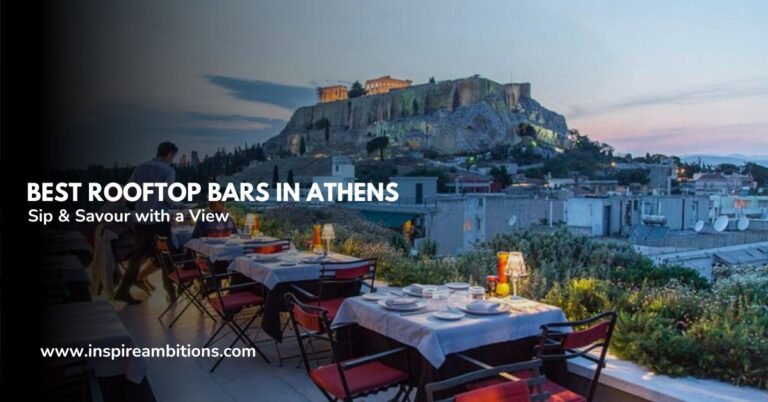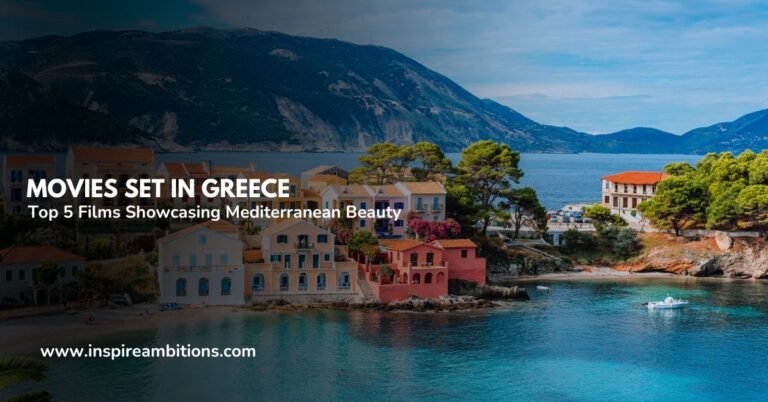Landmarks in Greece – Top Ancient Wonders to Visit
Greece, a land of ancient wonders and timeless beauty, beckons travellers with its iconic landmarks. You’ll find yourself transported through millennia as you explore the country’s rich cultural heritage.
From the majestic Acropolis in Athens to the stunning blue domes of Santorini, Greece’s landmarks offer a captivating journey through history, mythology, and natural splendour.
As you plan your Greek adventure, you might wonder which sites are genuinely unmissable. The Ancient Theatre of Epidaurus stands out for its remarkable acoustics, while the mystical monasteries of Meteora perched atop towering rock formations will leave you amazed.
Each landmark tells a unique story, from the birthplace of the Olympic Games in Olympia to the spiritual centre of the ancient world at Delphi.
Your exploration of Greek landmarks will take you beyond the mainland to enchanting islands like Crete, where the Palace of Knossos reveals the secrets of the Minoan civilization.
As you journey through this Mediterranean paradise, you’ll discover that Greece’s landmarks are not just remnants of the past but living testaments to the enduring spirit of one of the world’s most influential cultures.
Historic & Archaeological Landmarks
Greece’s ancient wonders offer a captivating journey through time. These remarkable sites showcase the ingenuity and artistry of ancient civilizations, providing invaluable insights into the country’s rich history.
Athens and the Acropolis
The Acropolis in Athens stands as a testament to classical Greek architecture. This iconic hilltop citadel houses several significant structures, including the magnificent Parthenon. Built in the 5th century BC, the Parthenon exemplifies Doric architecture and honours the goddess Athena.
Nearby, you’ll find the Erechtheion, known for its elegant Caryatid porch. The Temple of Athena Nike, though smaller, impresses with its intricate friezes. The newly built Acropolis Museum complements these ancient marvels, displaying artefacts and sculptures recovered from the site.
Don’t miss the Temple of Olympian Zeus, an enormous structure that took over 700 years to complete. Its colossal columns hint at its former grandeur.
Ancient Olympia and Delphi
Olympia, the birthplace of the Olympic Games, offers a glimpse into ancient athletic traditions. The site includes the remains of training areas, a stadium, and temples dedicated to Zeus and Hera.
Delphi, nestled on Mount Parnassus, was considered the “navel of the world” in ancient times. The Temple of Apollos served as home to the famous Oracle, whose prophecies influenced significant decisions throughout the ancient world.
The well-preserved theatre and stadium at Delphi showcase the site’s importance beyond religious functions. The Athenian Treasury and the Serpent Column add to Delphi’s historical significance.
Minoan Palace of Knossos
On the island of Crete, the Palace of Knossos offers a window into the sophisticated Minoan civilization. This sprawling complex, with its intricate frescoes and advanced drainage systems, dates back to 2000 BC.
The palace’s layout, with its maze-like structure, is believed to have inspired the myth of the Minotaur’s labyrinth. Vibrant reconstructions by archaeologist Sir Arthur Evans help visitors visualize the palace’s former splendour.
Knossos’s artefacts, including the famous “Prince of the Lilies” fresco, provide valuable insights into Minoan art and daily life. The site’s strategic location highlights the importance of maritime trade in Minoan culture.
Cultural & Religious Sites
Greece’s rich history has left behind numerous cultural and religious landmarks. These sites offer visitors a glimpse into the country’s spiritual heritage and architectural marvels.
Meteora Monasteries
Perched atop towering rock formations, the Meteora monasteries are a breathtaking sight. These Orthodox Christian sanctuaries date back to the 14th century and showcase remarkable Byzantine art.
You can explore six active monasteries, each offering stunning views of the surrounding landscape. The Great Meteoron, the largest and oldest, houses an impressive museum of religious artefacts.
Visitors must dress modestly and follow respectful behaviour guidelines. Climbing enthusiasts can tackle the rock faces, while nature lovers can hike the scenic trails between monasteries.
Corinth, Mycenae, and Thessaloniki
Ancient Corinth boasts the Temple of Apollo and the Roman Agora, transporting you back to classical times. Nearby, the ruins of Mycenae offer a glimpse into Bronze Age Greek civilization.
Thessaloniki, Greece’s second-largest city, blends Byzantine, Roman, and Ottoman influences. The White Tower, once a notorious prison, now serves as a museum chronicling the city’s history.
Don’t miss the Rotunda, an early 4th-century monument later converted into a church. The city’s numerous Byzantine churches, including the Basilica of St. Demetrios, showcase exquisite mosaics and frescoes.
Natural Wonders and Beaches
Greece’s diverse landscape offers a breathtaking array of natural wonders and stunning beaches. From towering mountains to pristine shores, the country’s natural beauty captivates visitors with its variety and splendour.
Mountains, Gorges, and Cliffs
Mount Olympus, the legendary home of the Greek gods, stands as Greece’s highest peak. Its majestic slopes offer hiking trails with panoramic views of the surrounding landscape.
The Vikos Gorge in the Pindus Mountains boasts the title of the world’s deepest canyon relative to its width. Its dramatic cliffs and lush vegetation create a haven for rare flora and fauna.
On Crete, you’ll find the Samaria Gorge, a 16-kilometer trek through rugged terrain. This National Park attracts outdoor enthusiasts from May to October, offering a challenging but rewarding hike.
The White Mountains of Crete present a striking contrast of snow-capped peaks against the Mediterranean backdrop. These limestone mountains provide excellent opportunities for hiking and exploring traditional villages.
Island Beaches and Landscapes
Greek islands boast some of the world’s most picturesque beaches. Santorini’s volcanic landscape creates unique black sand beaches, while its caldera offers stunning sunset views over the Aegean Sea.
Mykonos enchants with its golden beaches and crystal-clear waters. Paradise Beach and Super Paradise Beach are popular spots for sunbathing and water sports.
Zakynthos is home to the famous Navagio Beach, also known as Shipwreck Beach. This secluded cove, accessible only by boat, features striking white cliffs and turquoise waters.
Milos Island surprises with its surreal lunar-like landscapes and colourful rock formations. Its Sarakiniko Beach, with white volcanic rocks, creates an otherworldly atmosphere against the blue sea.
Contemporary Greek Life and Tourism
Greece’s modern culture blends ancient traditions with vibrant urban living. You’ll find bustling cafes in Athens and Thessaloniki where locals sip coffee and engage in lively discussions. These cities offer a mix of historical sites and contemporary art scenes.
Island hopping remains a popular tourist activity. Ferries connect the mainland to picturesque destinations like Santorini, Crete, and Naxos. Each island has its unique charm – from Oia’s famous sunsets to Mykonos’ iconic windmills.
Greek cuisine is central to daily life and tourism. You can savour fresh seafood at tavernas in coastal towns like Agios Nikolaos or try traditional moussaka in charming Nafplio.
Beaches draw millions of visitors annually. Crete’s shores offer a perfect blend of relaxation and water sports. Meanwhile, Fira in Santorini provides stunning caldera views for those seeking Instagram-worthy moments.
Cultural festivals occur year-round. You might catch a film screening at the Thessaloniki International Film Festival or witness Easter celebrations in Chania, Crete.
Greeks value family time and often gather for long, leisurely meals. You’ll notice shops closing for afternoon siestas, especially in smaller towns.
Tourism significantly impacts the economy. While it brings prosperity, it also presents challenges like overcrowding in popular spots during peak seasons.






